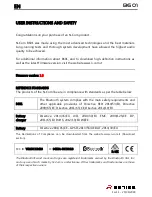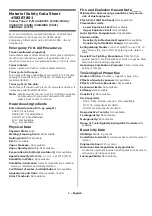
9
Technical Tips:
Lights Do Not Turn On
Lights Turn Off Too Quickly
1. Check that lamps and fixtures
work. Compare wiring to the
Wiring Diagram
in this manual.
Check that the power is on.
2. If installing during daylight,
remember that after power
is turned on, the sensor will
provide 5 minutes of Test Time.
After 5 minutes, the sensor will
switch to Automatic Mode and
will not work during daylight if
the photocell control is turned to
night-only (moon) position.
If you require more than 5 minutes
of Test Time, turn power off for at
least 10 seconds and then turn power
back on.
3. If you require the sensor to
operate both day and night,
turn the center control knob
counterclockwise to the sun and
moon symbol.
4. Check that lights from other
sources, such as adjacent porch,
garden, or streetlights, or lights
from inside the house, are not in
the sensor’s view. The sensor’s
photocell may detect the light
and deactivate. For operation at
higher ambient light levels, turn
the photocell control (center
knob) toward the sun symbol.
5. Was sensor wired hot? If
so, circuitry may have been
damaged.
1. Check if the sensor is being
“tricked” by reflected light. If
lights controlled by the sensor
shine or reflect into the photocell
(located behind the lens), the
unit will go on briefly, but then
turn off, “thinking” it is daytime.
Solutions:
• Adjust the photocell control
(center knob) slightly
counterclockwise to allow
operation at higher ambient
light levels
• Move the lights or reflectors
• Mask lens in the direction of the
lights and/or reflections
2. Check if “R” lamps, non-reflector
“A” lamps, or self-ballasted
PL lamps are being used in a
non-enclosed lampholder. If so,
switch to reflector PAR floodlight
lamps or Quartz floods so the
sensor is not affected by stray
light. If using PAR floodlights,
consider using lower-wattage
energy-saving lamps.
Problem:
Light
shining or
reflecting
directly
into
photocell
















































